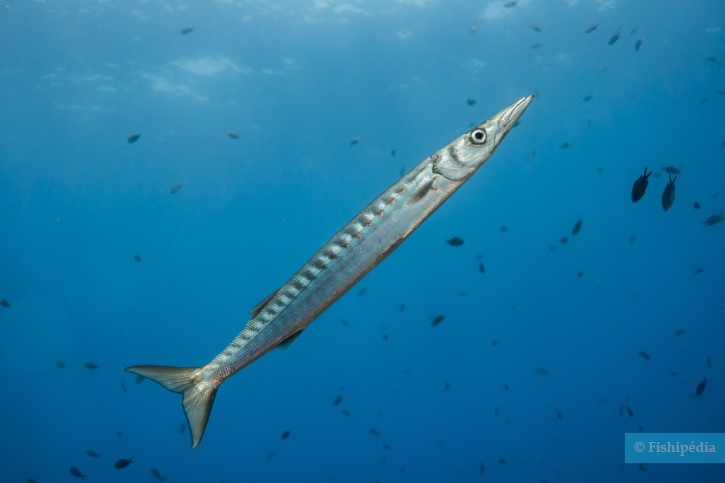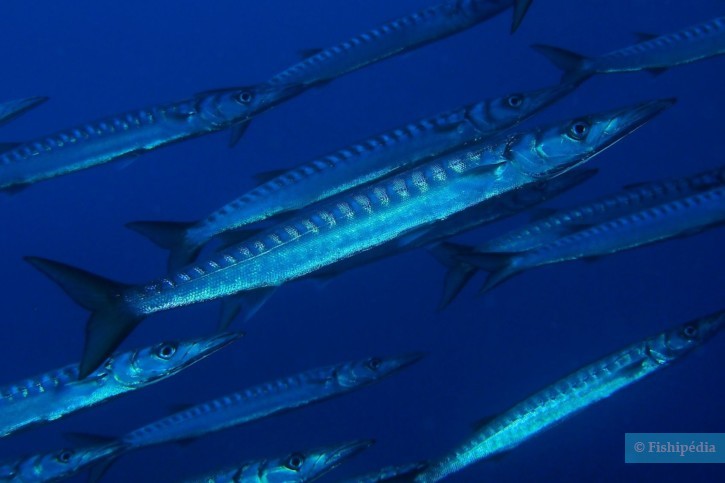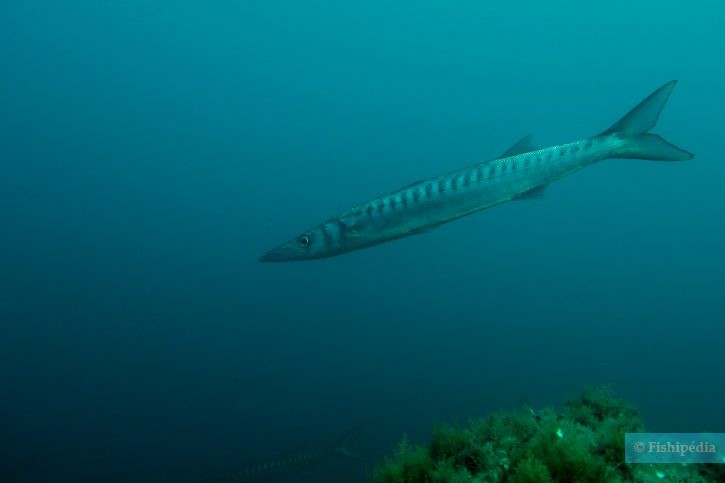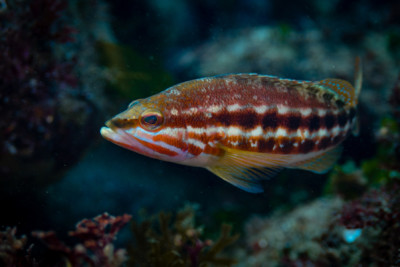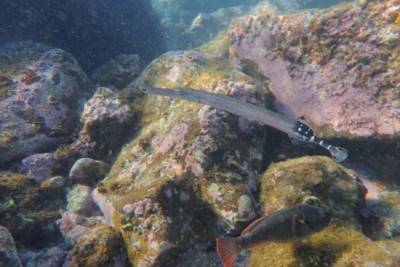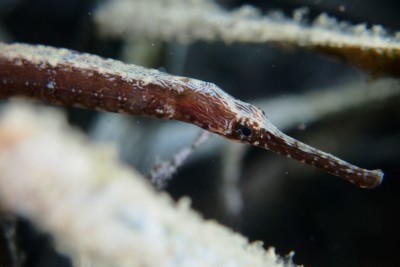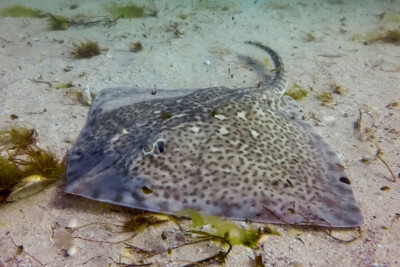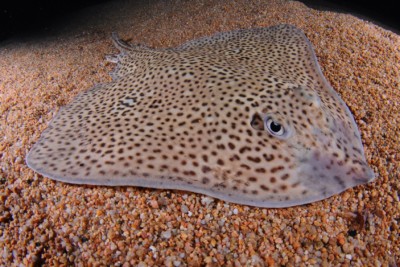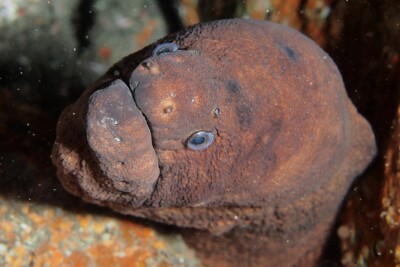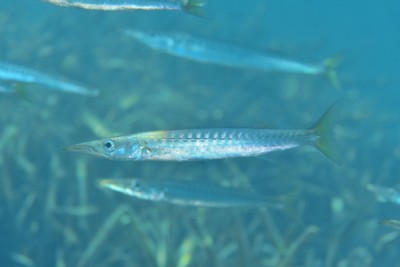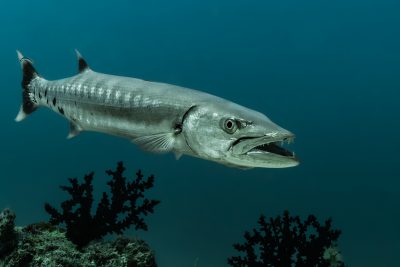yellowmouth barracuda
| Family | Sphyraenidae |
|---|---|
| Genus | Sphyraena |
| IUCN category (World) | LC |
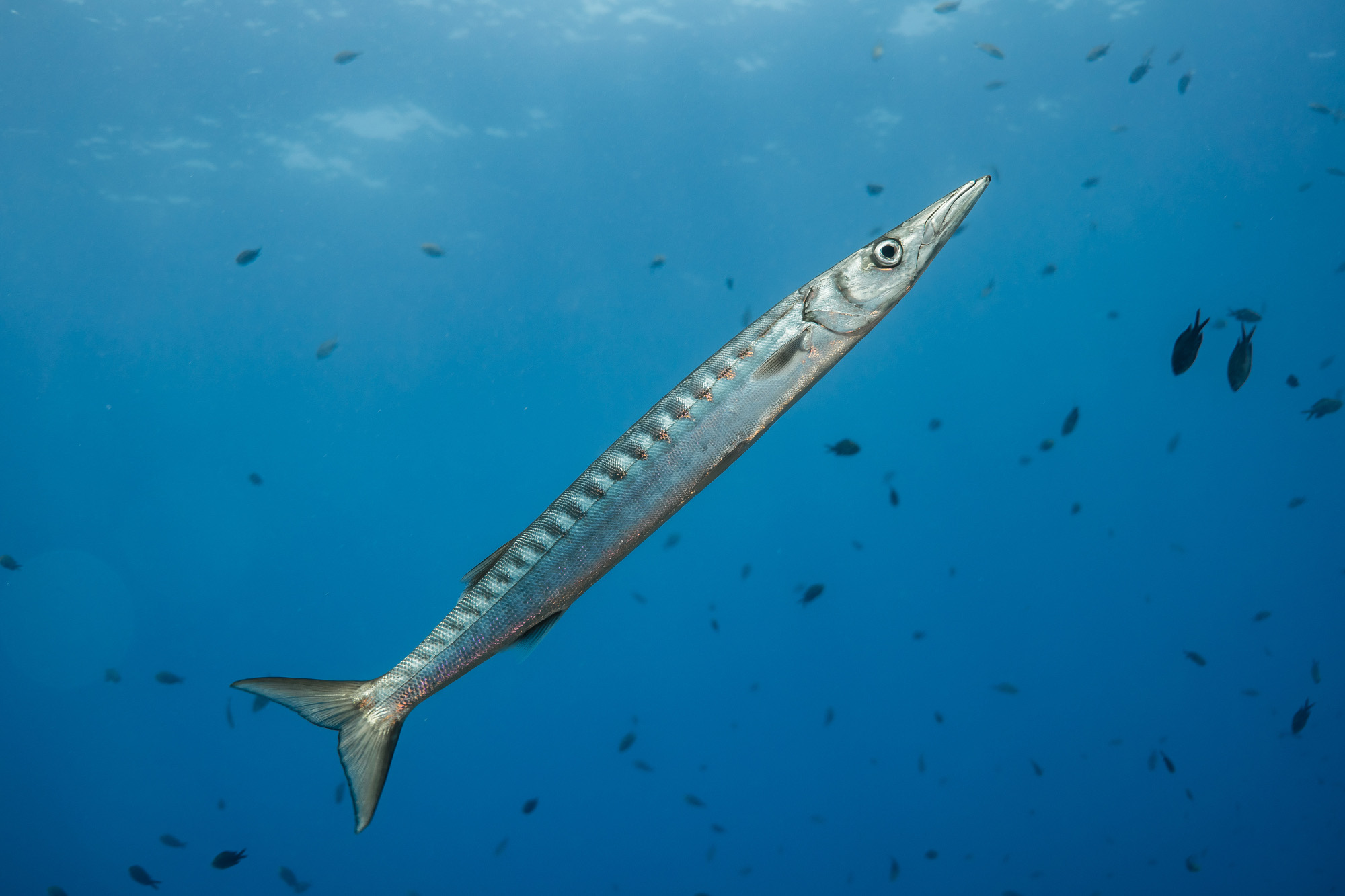

Introduction
Sphyraena viridensis, commonly known as the yellowmouth barracuda, is a predator found in the Mediterranean Sea and the eastern temperate Atlantic Ocean.
Who is it?
Morphology
-
Average size40 cm
-
Maximum size128 cm
-
Patternvertical stripes
-
Average size40 cm
-
Maximum size128 cm
-
Patternvertical stripes
How to recognize This fish ?
This sleek predator is mainly silver-grey with a darker back than belly. It has about twenty black stripes on the flanks.
The head of the yellowmouth barracuda is slender and pointed, with a large eye located in the middle of the head and a large mouth. The fins are grey. The tail is homocercal.
Unlike the barracuda, the teeth of the yellowmouth barracuda are not visible when its mouth is closed.
From afar, it is sometimes mistaken for the great barracuda, Sphraena sphyraena, but the stripes of the latter are less distinct.
Sexual dimorphism
There is no apparent sexual dimorphism.
Behaviour & Life cycle
-
dietcarnivorous
-
Sociabilityliving in a group or alone
-
territorialYes
-
Way of livingdiurnal
The yellowmouth barracuda is a formidable predator that feeds on fish, cephalopods, and sometimes crustaceans. Juveniles are found in schools of hundreds of individuals while adults are more solitary and territorial.
Curious, it does not hesitate to approach divers slowly. This fish, a key player in the food chain, is not used to being approached.
Reproduction
-
Reproductionovipare qui pond en eau libre
This fish is an oviparous species that spawns in open water. The larvae are pelagic and the juveniles gather along the coasts.
Harmless species
This fish poses no danger to humans. However, caution should be exercised when fishing for this species as it is equipped with sharp teeth.
Origin and distribution
Geographic distribution & Conservation
It is present in the Northeast Atlantic Ocean, from Cape Verde to Iceland, and in the Mediterranean Sea. It is targeted by fisheries in several regions of the Mediterranean, particularly in Turkey. It is also sometimes caught as bycatch.
Conservation status of populations (IUCN)
What is its habitat?
Natural environment characteristics
-
Depth1 - 100 m
Biotope presentation
This species is most commonly found in shallow waters or near the surface. However, it can also be encountered up to 100 meters deep.
As an adult, it frequents a wide variety of habitats. It generally lies in wait in rocky areas or near reefs. It is also found in sandy areas, near estuaries, or in port zones.
Species of the same biotope
Fishkeeping
Not recommended
We do not recommend keeping this species in an aquarium. It has unpredictable needs which, if not met, generate significant stress, potentially leading to a shorter life expectancy, an interruption of its growth or the development of pathogens.
To go further
Sources & Contributions
Participation & Validation
The Fishipedia team and specialist contributors are committed to providing high-quality content. However, although the information comes from scientific sources or testimonials from specialists, the cards may contain inaccuracies.

Adrien Falzon

Benoit Chartrer
Translation
Translation done with the valuable contribution of our translators, who make this information available to a wider audience. We sincerely thank them for their commitment.

Benoit Chartrer
Scientific partners
Tags
Same genus
Species of the same biotope
